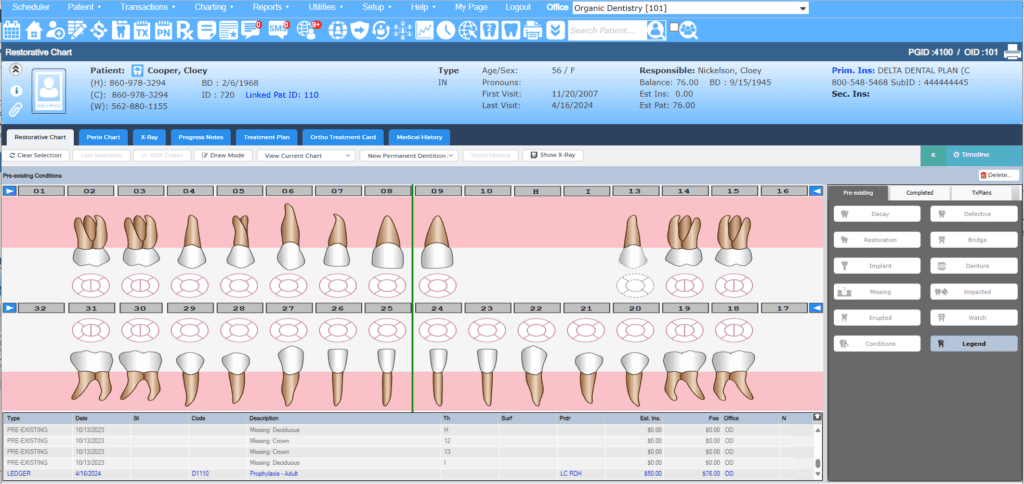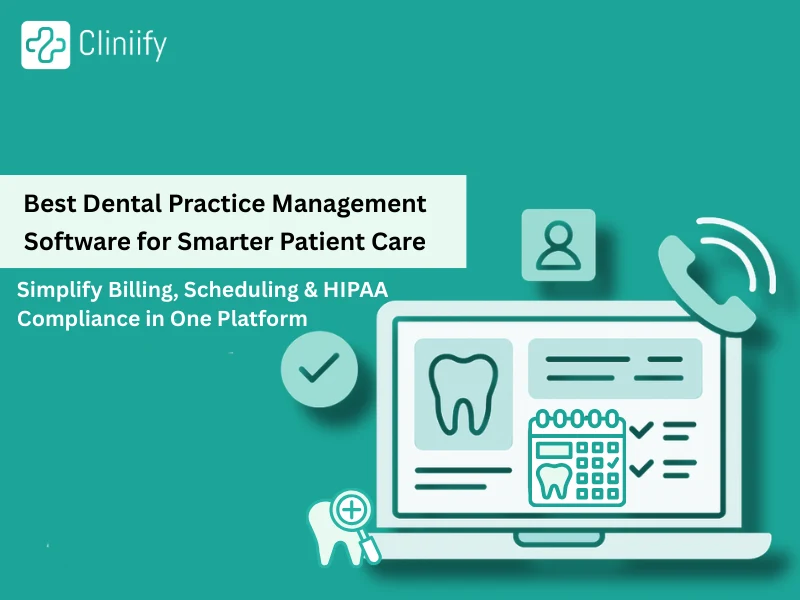Featured
Table of Contents
- – Why Efficient Practice Management Is The New C...
- – From Software To Seo: How To Scale A Profitabl...
- – 5 Dental Scheduling Tips That Will Cut No-sho...
- – Practice Management For Dentists: Streamline ...
- – Top Dental Management Software Reviewed: Fea...
- – The Best Dental Billing Software To Reduce C...
Running a dental practice today takes more than technical ability alone. Top dental clinics rely on modern digital tools that streamline scheduling, billing, and patient care. This article explores the tools, systems, and strategies that keep clinics efficient — from PPM platforms to marketing and call handling solutions.
Not long ago, many dental offices relied on spreadsheets and paper files to handle records and reminders. This approach worked once, but modern practices now deal with far more complexity. Regulatory requirements now demand digital precision. That’s why a unified software ecosystem is now non-negotiable.
Why Efficient Practice Management Is The New Competitive Advantage In Dentistry
PPM tools are the backbone of any clinic. They integrate scheduling, charting, billing, and reporting into a streamlined workflow. Instead of juggling multiple systems, staff can view appointments, treatment plans, and payments all in one place. The outcome is time saved, fewer errors, and better patient care.
What separates great PPM software from average ones is the ability to centralize and interpret data. Take this as an example, if insurance pre-authorizations sync with billing, you cut down admin time dramatically. Built-in dashboards reveal bottlenecks and missed revenue opportunities. Access to this data turns daily chaos into clarity.
Finding the best system for your team is a mix of features, budget, and usability. Dentrix by Henry Schein is an industry standard with robust modules for reporting, imaging, and billing. Eaglesoft software is favored by clinics that value detailed charting. Open Dental provides open customization and third-party add-ons. The cloud-based system Curve Dental is cloud-first and easy to scale. Each has strengths and quirks. The best step is to trial two or three and test real-world workflows. User adoption matters as much as features.
Staff alignment are underestimated when new systems roll out. A powerful software suite is useless if the team knows how to use it effectively. It helps to appoint an internal champion who can train others and maintain consistency. Review reports together to see how adoption is progressing. Small incremental coaching pays off massively later.
From Software To Seo: How To Scale A Profitable Dental Practice
Appointment management tools have transformed dramatically. Automation now handle confirmations and cancellations with real-time updates. Most platforms offer waitlist management and resource allocation. Optimized calendars reduce downtime. Forward-thinking clinics enable web booking, letting patients choose slots directly. The result is fewer missed calls.
Another underrated feature of advanced scheduling tools comes from analytics. They show which times or staff generate most appointments. This data help you plan staff rosters and marketing campaigns. Say you notice certain hygienists have repeat reschedules, you might tweak hours or ad targeting.
Billing and insurance workflows form the backbone of cash flow. Submitting claims manually is slow and error-prone. Integrated clearinghouse connections shorten payment cycles. Some systems instantly verify insurance, meaning better financial transparency. Payment plans and automatic reminders reduce accounts receivable aging. Monitoring KPIs like “days in A/R” helps you make data-driven decisions.
5 Dental Scheduling Tips That Will Cut No-shows In Half
Many growing dental offices integrate dashboards for cash flow insights. These link payments, expenses, and insurance data. With proper tagging, reports update daily. You’ll track how seasonality impacts revenue. Such data integration makes forecasting accurate.
Once your systems run smoothly, focus shifts to new patient acquisition. No dental practice thrives on referrals alone anymore. Strong local SEO help fill chairs consistently. Ensure your GBP is verified, encourage real patient reviews, and create “service + suburb” landing pages. Educational articles that answer everyday questions build trust and visibility.
CRM-linked email and SMS campaigns are becoming essential. Connected systems that sync with PPM data can send timely recall reminders, reviews, and reactivations. Messages can include birthday offers or seasonal promos. Such targeted outreach turns one-time visits into long-term loyalty.
Practice Management For Dentists: Streamline Scheduling, Billing, And Marketing
Paid ads and retargeting amplify reach fast. Focus within 10-15km radius for keywords like “emergency dentist open now”. Re-engage those who visited but didn’t book. Promote seasonal specials to boost conversion.
A powerful but overlooked efficiency upgrade is the outsourced reception system. Despite automated reminders, a ringing phone can cost you revenue. Dental answering services answer calls when your team can’t. They integrate with most PPM systems. It makes a huge difference for late-night pain cases. Clinics using an answering service see improved retention. Embedding contextual links about answering services and patient communication creates smooth navigation between topics.

After integrating operations and marketing, you start seeing real leverage. Automation reduces admin drag, while data visibility enables smarter choices. In practical terms, this means less chaos, more calm, and steady growth.
Top Dental Management Software Reviewed: Features, Pricing, And Tips
To implement effectively:Select your main PPM. Ensure integrations are configured.2. Automate communication. Appointment confirmations, recalls, and feedback requests cut cancellations.3. Simplify billing. Adopt e-invoicing and dashboards.Invest in local SEO and retargeting. Tie in your dental answering service pages.Iterate quarterly. Reports on calls and lead sources keep you improving.Keep evolving your systems. Patient expectations will rise, so revisit your workflows every six months.
The modern dental practice thrives on integration, not improvisation. By aligning your technology, communication, and marketing, you gain predictable growth and happier patients.
The Best Dental Billing Software To Reduce Claim Rejections And Boost Cash Flow

Discover how dental answering services fit into patient-first practice management here.
Table of Contents
- – Why Efficient Practice Management Is The New C...
- – From Software To Seo: How To Scale A Profitabl...
- – 5 Dental Scheduling Tips That Will Cut No-sho...
- – Practice Management For Dentists: Streamline ...
- – Top Dental Management Software Reviewed: Fea...
- – The Best Dental Billing Software To Reduce C...
Latest Posts
5 Dental Scheduling Tips That Will Cut No-shows In Half
Complete Dental Practice Management Guide For Dentists & Clinic Owners
Managing A Dental Practice In The Ai Era: What’s Changing
More
Latest Posts
5 Dental Scheduling Tips That Will Cut No-shows In Half
Complete Dental Practice Management Guide For Dentists & Clinic Owners
Managing A Dental Practice In The Ai Era: What’s Changing